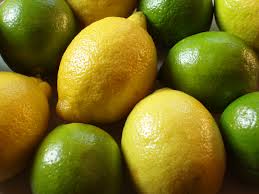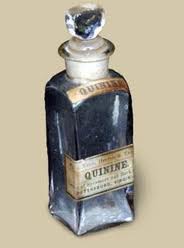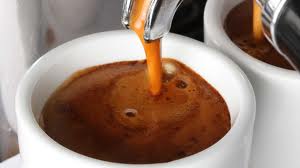Tagged: Physiology of taste of wine
Taste of wine, Flavour (Part 2)
Taste Compounds, Chemistry, Anatomy & physiology of the sense of Taste in Wine continues..
Taste compounds- tastants, have smaller molecules than those of odors and, unlike odors, must be water-soluble (hydrophilic) to cause sensation. Fortunately wine is liquid and the taste components in it are already dissolved in the product. Our oral cavity senses taste and touch.
Some interpretations of the sense of touch, like: Austerity of tannins, or burning of overpowering Alcohol, oiliness of glycerin etc. that have texture (affecting the touch sensation) and other physical features such as temperature, all related to the sense of touch are many times confused with the actual sense of taste. While there may be many aroma nuances within the wine Aromas categories, as arranged on the Aroma wheel, there are only four tastes considered in wine: salty, sour, sweet and bitter.
(The section below, aided by: Taste: Compiled by Tim Jacob, Cardiff University, UK : http://www.cf.ac.uk/biosi/staffinfo/jacob/index.html )
 Salty tastes, very seldom are present in wine because most vine rootstocks are known to restrict the uptake of salt (maybe in Jerez and some western Australian wines). But minerality can sometimes be mistaken as salty. Salty is the most common of tastes, these come from sodium chloride (table salt), sodium nitrite, sodium bicarbonate (as in baked foods), and sodium benzoate (in various beverages). Salt (sodium chloride (Na+ Cl-). Affect the taste receptors by Na+ ions entering the receptor cells via Na-channels. The entry of Na+ causes cell depolarization, transmitter release occurs and results in increased firing in the primary afferent nerve, thus salty sensation is interpreted in the brain. But as mentioned there are very few wines that are salty or give rise to real salty sensation.
Salty tastes, very seldom are present in wine because most vine rootstocks are known to restrict the uptake of salt (maybe in Jerez and some western Australian wines). But minerality can sometimes be mistaken as salty. Salty is the most common of tastes, these come from sodium chloride (table salt), sodium nitrite, sodium bicarbonate (as in baked foods), and sodium benzoate (in various beverages). Salt (sodium chloride (Na+ Cl-). Affect the taste receptors by Na+ ions entering the receptor cells via Na-channels. The entry of Na+ causes cell depolarization, transmitter release occurs and results in increased firing in the primary afferent nerve, thus salty sensation is interpreted in the brain. But as mentioned there are very few wines that are salty or give rise to real salty sensation.
Sour tastes come from acids citric acids in citrus fruits, malic acid in apples peach or pears, tartaric acid in wine and lactic acid in milk products.Sour taste is acid which are protons: (H+). Some new evidence suggests that there is an acid-sensing channel. This channel is from the transient receptor potential channel (TRP) family and is a non-selective channel. The activity is gated by pH (H+ ion concentration). Apart from wine, acids are found in a wide variety of fruits, vegetables and foods products such as baked, soft drinks, sweets, jams, jellies, milk products, processed meats and even oils.
milk products.Sour taste is acid which are protons: (H+). Some new evidence suggests that there is an acid-sensing channel. This channel is from the transient receptor potential channel (TRP) family and is a non-selective channel. The activity is gated by pH (H+ ion concentration). Apart from wine, acids are found in a wide variety of fruits, vegetables and foods products such as baked, soft drinks, sweets, jams, jellies, milk products, processed meats and even oils.
 Sweet tastes comes from sugars, primarily sucrose and others like, glucose, fructose or lactose There are special proteins in the taste receptor membrane that bind glucose and other carbohydrates like sucrose and fructose that activate intracellular messengers, that transmit impulses through the primary afferent nerve to the brain, sweetness is sensed
Sweet tastes comes from sugars, primarily sucrose and others like, glucose, fructose or lactose There are special proteins in the taste receptor membrane that bind glucose and other carbohydrates like sucrose and fructose that activate intracellular messengers, that transmit impulses through the primary afferent nerve to the brain, sweetness is sensed
Bitter tastes come from alkaloids, such as contained in coffee and quinine (tonic water). Bitter substances bind to T2R receptors activating the G-protein and causing activation of PLC. The elevated Ca2+ causes transmitter release and this sends electrical messages of bitterness to the brain.
Although taste buds were noted to be of different sizes and shapes, depending upon their location, subsequent investigation proved that all of them contain the same kinds of taste receptor cells (papillae) that supply the sensations of taste. The entire top surface of the tongue can sense all of the various tastes.
 Taste receptor cells do not have an axon. Information is relayed to terminals of sensory fibers by transmitter. These fibers arise from the ganglion cells of the cranial nerves Vll (facial) – a branch called the Chorda Tympani and cranial nerve lX (glossopharyngeal).
Taste receptor cells do not have an axon. Information is relayed to terminals of sensory fibers by transmitter. These fibers arise from the ganglion cells of the cranial nerves Vll (facial) – a branch called the Chorda Tympani and cranial nerve lX (glossopharyngeal).
We already established that taste is mainly smell (a combination we describe as Flavour). Without smell we cannot tell the difference between food or drink products. After all orange is sweet and sour with orange smell and melon is also sweet and sour but with melon smell etc. same goes with red or white wines.
When a tasty product enters the mouth, its chemicals are dissolved by the saliva, and the free-floating molecules enter the taste bud through a pore in its center. If the molecule binds to the tip of a receptor cell, it will excite that cell into issuing a series of chemical and electrical signals. For example, sweet and some bitter taste stimuli activate a chemical messenger known as Gustducin, from the G-family of proteins. That send the data relayed to the brain (to the gustatory cortex) and a sensation of “sweet” is interpreted in the brain/mouth.
Salty and sour molecules do not require the receptor tips. Na Ions enter the taste cells directly through special channels in their walls.
But the “taste of wine” is not governed solely by the 4 basic taste, Minerals Tannins and Alcohol are also important factors in what we call: “the taste of wine”. Sweetness and alcohol are round in their “touch” while acidity and tannins are harsh or sharp cornered, rigorous to the touch (austere). When the rounded and sharp edge components balance each other to a “new” completion, a wine can be described as balanced.
 Sweetness In wine most the sugars turn to alcohol during fermentation. Wines may have some residual sugar, and according to the amount of sugar in Grams per litter wines may vary from Brut (totalt dry) to dry up to 4 g/l, medium dry up to 12 g/l, medium sweet up to 45 g/l, to swee more than 45 g/l. In the wine industry sugar is measure either by portable brix meters in the vineyard or others at the winery .Degrees Brix (°Bx) is the sugar content of an aqueous solution. One degree Brix is 1 gram of sucrose in 100 grams of solution. As the wine’s alcohol level depends on the sugar content (brix multiplied by 5.5= the future wine alcohol level). A measurement of the sugar content of grapes, must and wine, indicating the degree of the grapes’ ripeness (sugar level) at harvest. Most wine grapes are harvested at a level of between 22 and 25 Brix depending on the grape variety and winemaker preferences (apart from climate ripeness restrictions)
Sweetness In wine most the sugars turn to alcohol during fermentation. Wines may have some residual sugar, and according to the amount of sugar in Grams per litter wines may vary from Brut (totalt dry) to dry up to 4 g/l, medium dry up to 12 g/l, medium sweet up to 45 g/l, to swee more than 45 g/l. In the wine industry sugar is measure either by portable brix meters in the vineyard or others at the winery .Degrees Brix (°Bx) is the sugar content of an aqueous solution. One degree Brix is 1 gram of sucrose in 100 grams of solution. As the wine’s alcohol level depends on the sugar content (brix multiplied by 5.5= the future wine alcohol level). A measurement of the sugar content of grapes, must and wine, indicating the degree of the grapes’ ripeness (sugar level) at harvest. Most wine grapes are harvested at a level of between 22 and 25 Brix depending on the grape variety and winemaker preferences (apart from climate ripeness restrictions)
Acidity. Wines contain mainly tartaric acid (from the grapes); which gives the wine a fresh fruit y touch on the palate and tongue, sort of a “crisp” feel, mainly felt on the sides of the tongue. Wines with insufficient acidity may taste dull or even jammy or “tired”. In white wines, which have less tannin than reds, acidity is important to the body and feel of the wine.
y touch on the palate and tongue, sort of a “crisp” feel, mainly felt on the sides of the tongue. Wines with insufficient acidity may taste dull or even jammy or “tired”. In white wines, which have less tannin than reds, acidity is important to the body and feel of the wine.
Bitterness in wine is elicited primarily by flavonoid phenols in red wines, which are bitter and astringent, and by ethanol. Monomeric flavonoid phenols are primarily bitter. The difference between red and white wine phenol monomers produces a significant difference in brain perception of bitterness. Ethanol enhances bitterness intensity and duration, whereas varying wine pH has little or no effect on the perceived bitterness. (from Bitterness in wine by Noble AC. Physiol Behav. 1994 Dec;56(6):1251-5)
 Tannins – bitterness in wine is mainly attributed to Tannins, are a family of natural organic compounds: flavonoid phenols that are found in grape skins, seeds, and stems. Aging wine in oak barrels transfers oak tannin into the juice which affects the touch and flavour. Tannins are also act as natural preservative to wine and introduce important antioxidants to our body. They take a major part in establishing wine structure and texture. The longer the grape skin contact with the fermenting wine, or in relation the crushing method of grapes, tannins concentration is affected especially in Red wine where it affects taste, touch sensation At times Tannins may feel a bit overpowering, that leaves our mouth dry. and the depth of colour. Tannic wines affect the touch sensation in the mouth and back of the throat. Tannins also contribute at times a bitter aftertaste.
Tannins – bitterness in wine is mainly attributed to Tannins, are a family of natural organic compounds: flavonoid phenols that are found in grape skins, seeds, and stems. Aging wine in oak barrels transfers oak tannin into the juice which affects the touch and flavour. Tannins are also act as natural preservative to wine and introduce important antioxidants to our body. They take a major part in establishing wine structure and texture. The longer the grape skin contact with the fermenting wine, or in relation the crushing method of grapes, tannins concentration is affected especially in Red wine where it affects taste, touch sensation At times Tannins may feel a bit overpowering, that leaves our mouth dry. and the depth of colour. Tannic wines affect the touch sensation in the mouth and back of the throat. Tannins also contribute at times a bitter aftertaste.
Alcohol – Alcohol is another important component of the wine taste. It may contribute a burning sensation on the palate and throat when excessive, but It has a major role in achieving the overall balance of wine by softening the “edge” of over acidic or tannic wines. Alcohol affects the feel of “body” to wines. A wine with high alcoholic content will always feel full bodied.
 Minerals – Soil minerals travel into the grape with water. Grapes, must and wine contain dissolved non-organic salts. These salts are local soil minerals or metal elements, and occur naturally in grapes, minerals attach to berry surfaces as a result of vineyard treatment methods, and enter the wine during the wine making process. The concentration of potassium, nitrogen, phosphorus, sulfur, magnesium and calcium can range from 200 to 2,000 mg/l in grape juice. Potassium is an important factor in defining wine pH and tartrate stability. Its concentration in wine ranges from 200-2000 mg/L High level of potassium in wine has great nutritional values. (from http://waterhouse.ucdavis.edu/whats-in-wine/minerals). Minerals are often felt stronger in white wines grown on chalky soil, described in French as: goût de fossile (the taste of Fossils), sensed in Chablis and Bourgogne whites.
Minerals – Soil minerals travel into the grape with water. Grapes, must and wine contain dissolved non-organic salts. These salts are local soil minerals or metal elements, and occur naturally in grapes, minerals attach to berry surfaces as a result of vineyard treatment methods, and enter the wine during the wine making process. The concentration of potassium, nitrogen, phosphorus, sulfur, magnesium and calcium can range from 200 to 2,000 mg/l in grape juice. Potassium is an important factor in defining wine pH and tartrate stability. Its concentration in wine ranges from 200-2000 mg/L High level of potassium in wine has great nutritional values. (from http://waterhouse.ucdavis.edu/whats-in-wine/minerals). Minerals are often felt stronger in white wines grown on chalky soil, described in French as: goût de fossile (the taste of Fossils), sensed in Chablis and Bourgogne whites.
Change of taste in aging wines
Oxidation is the most important part of wine maturation. These changes include the change in colour of red to brick brown red during aging, loss of primary flavour varietal character and the development of secondary and tertiary aromas. These changes appear in white and red wines, but they are more noticeable in white wine. The rate of oxidation depends on pH, temperature, concentration of dissolved oxygen, and the phenolic composition. Oxidation is faster in lower acidity and high temperature conditions, in the barrel and later in the bottle. Oxidation also depends on the phenolic composition of the wine.
aging, loss of primary flavour varietal character and the development of secondary and tertiary aromas. These changes appear in white and red wines, but they are more noticeable in white wine. The rate of oxidation depends on pH, temperature, concentration of dissolved oxygen, and the phenolic composition. Oxidation is faster in lower acidity and high temperature conditions, in the barrel and later in the bottle. Oxidation also depends on the phenolic composition of the wine.
Careful storage of aging wines, will help wines become smoother, rounder with well incorporated tannins, as through polymerization of phenolic compounds causing them to become less bitter and reduction in acidity which should not affect the fruitiness of the wine. Further polymerization of phenols, enlarges their molecular size causing them to precipitate and sink as sediments the bottle. This leads to a smoother wine with reduced astringency and a rounder taste. The rest is really down to your “taste” or “flavour”  vocabulary,
vocabulary, which in wine is governed by association: cinnamon, coffee, chocolate, tobacco, saddle soap, vanilla, toasted bread, tarte Tatin etc. are all picked from past exposure and association.
which in wine is governed by association: cinnamon, coffee, chocolate, tobacco, saddle soap, vanilla, toasted bread, tarte Tatin etc. are all picked from past exposure and association.
All of these and some more… contribute to what is called the TASTE OF WINE, and if you got all the way to here, You do deserve a wine that tastes good whatever that means, after all taste is a personal preference.
YOUR WINEGUIDE


